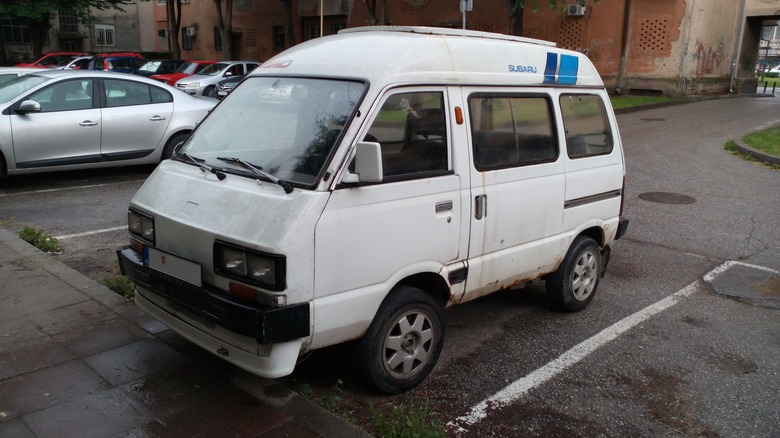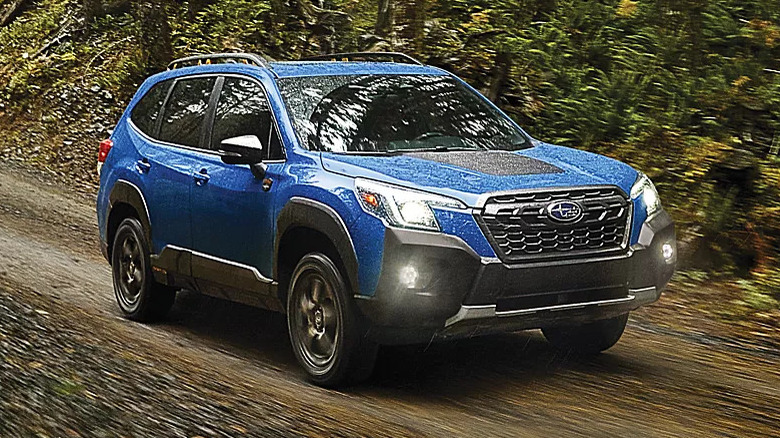Here's What Happened To Subaru's Forgotten Sumo Microvan
When you think about a van or a truck in the United States, people generally want things bigger with a lot more space, but when you look around at the rest of the world — particularly in Japan — that is not the case. Japan has three classes of cars, one of which is called a kei car. These vehicles fit within a specific size restraint that affords the buyer incentives on taxes and regulations. Of course, having a tiny car isn't practical for everyone, so some companies have devised vans and trucks to fit within these parameters. The Subaru Sambar, which comes as a microvan or truck, is a perfect example. The Sambar was first produced in 1961, and the line still exists today.
Starting in 1983, Subaru introduced another microvan that went by many names. For the Japanese, it was called the Domingo. In Europe, the Libero. In the English-speaking world, it was called Sumo. Unlike the Sambar, the Sumo didn't conform to the kei car regulations, opting for a larger body to house the larger three-cylinder engine as opposed to the Sambar's two-cylinder one, and Subaru also emphasized 4WD.
It would take a decade before an updated model of the Sumo would hit production, though the Sambar got an upgrade several years prior. Fifteen years after its debut, Subaru discontinued the Sumo model. Instead of splitting their microvan market, Subaru shepherded those who wanted something bigger to a new model.
[Featured image by HSV via Wikimedia Commons | Cropped and scaled | CC BY-SA 4.0 DEED]
Evolution to SUV
The last year for the Subaru Sumo was 1998. The previous year, Subaru entered the market with the crossover SUV Forester. Like the Sumo, it also did not conform to kei car specifications, had a more sizable engine, and featured full 4WD, rather than just being an option for the microvan. The crossover SUV was a relatively new thing in the mid-1990s, with Subaru first dipping its toes into that space with the Outback in 1994, though that was more of a station wagon than a proper SUV. The same could be said about the first Forester, but later revisions quickly turned it into what is now known as a crossover SUV. While it provides much of the space that a van allows, it also has a body more appropriate for a bigger engine for some rougher driving, rather than the city driving that kei cars are most suited to.
Nowadays, crossover SUVs are Subaru's bread and butter. The company's website shows nine different models for sale in the United States. Five of those nine are SUVs, and according to Car and Driver, the Subaru Outback and Subaru Crosstrek rank among the top 25 best-selling cars of 2023. Though the Subaru Forester doesn't make that list, it is still a fixture of the Subaru line, outlasting the 15-year existence of the Subaru Sumo by almost a dozen years.

